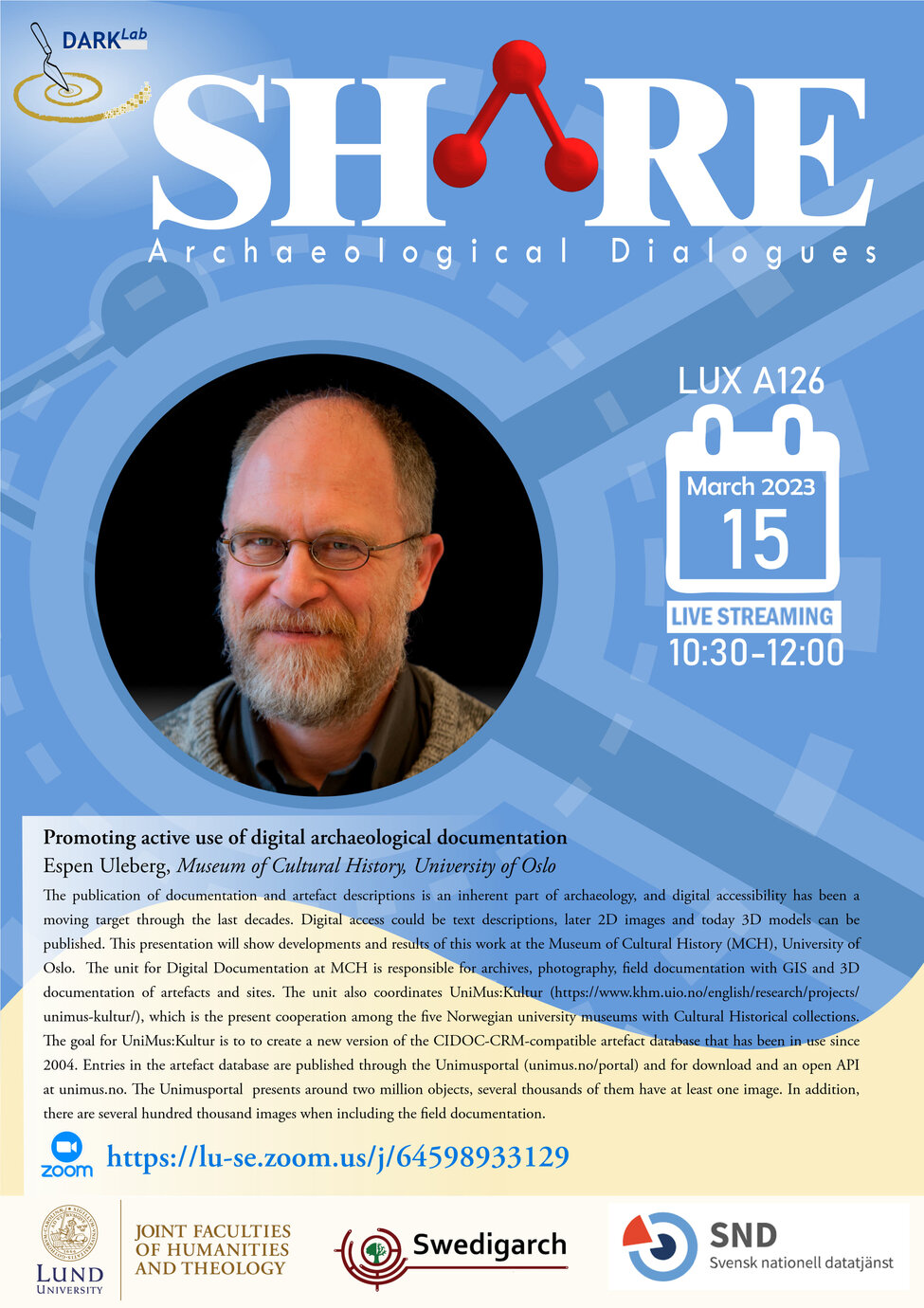The publication of documentation and artefact descriptions is an inherent part of archaeology, and digital accessibility has been a moving target through the last decades. Digital access could be text descriptions, later 2D images and today 3D models can be published. This presentation will show developments and results of this work at the Museum of Cultural History (MCH), University of Oslo. The unit for Digital Documentation at MCH is responsible for archives, photography, field documentation with GIS and 3D documentation of artefacts and sites. The unit also coordinates UniMus:Kultur (https://www.khm.uio.no/english/research/projects/unimus-kultur/), which is the present cooperation among the five Norwegian university museums with Cultural Historical collections. The goal for UniMus:Kultur is to to create a new version of the CIDOC-CRM-compatible artefact database that has been in use since 2004.
Entries in the artefact database are published through the Unimusportal (unimus.no/portal) and for download and an open API at unimus.no. The Unimusportal presents around two million objects, several thousands of them have at least one image. In addition, there are several hundred thousand images when including the field documentation. The artefacts from MCH will also be published at ARIADNE+. To achieve this, artefact terms have been mapped to Getty's AAT and the archaeological periods are registered at perio.do. Internationalisation is a goal for MCH, and artefacts from the Ethnographic collection have been published with translations to native languages, inuktitut and santal, respectively.
The Norwegian university museums use Intrasis for field documentation, and also have the ADED project that merges all this documentation and makes it possible to do queries across single excavations. The ADED interface also integrates the excavations with the artefact database, images and excavation reports as well as links to the National SMR, Askeladden.
MCH has developed the use of 3D documentation, especially in connection with the new Viking Age Museum. A large number of artefacts, ranging from small wooden objects to Viking ships are documented with 3D. In addition, 3D-documentation is increasingly used for site documentation. MCH's BItFROST project (https://www.khm.uio.no/english/research/projects/bitfrost/index.html) aims to increase the use of 3D documentation in research and teaching. BItFROST has improved MCH's structures for storing 3D data, and supports open source technologies as an approach for FAIR data management. It is built around the 3DHOP viewer, and it shares resources and strategies with the Dynamic Collections project in Lund, Sweden.
The Museum of Cultural History has a large part of its material online, and adheres to the principles of FAIR data. MCH, as many others, can say the challenge is the R - the reusability. However, the database is a vital infrastructure at the museums, and the unimusportal is very important for archaeologists at the museums, the institutes and the counties since it affords access to almost all archaeological collections in Norway. A challenge is to incorporate even better field documentation and 3D models in a common user interface.
The hybrid seminar will be held on 15 March, from 10.30 to 12 , on zoom (https://lu-se.zoom.us/j/64598933129) and in person at the LUX building, room A126.

